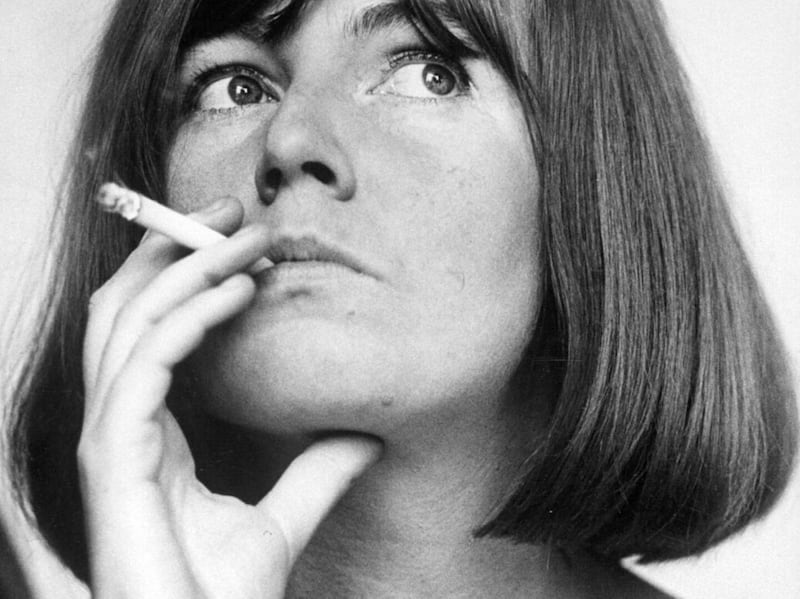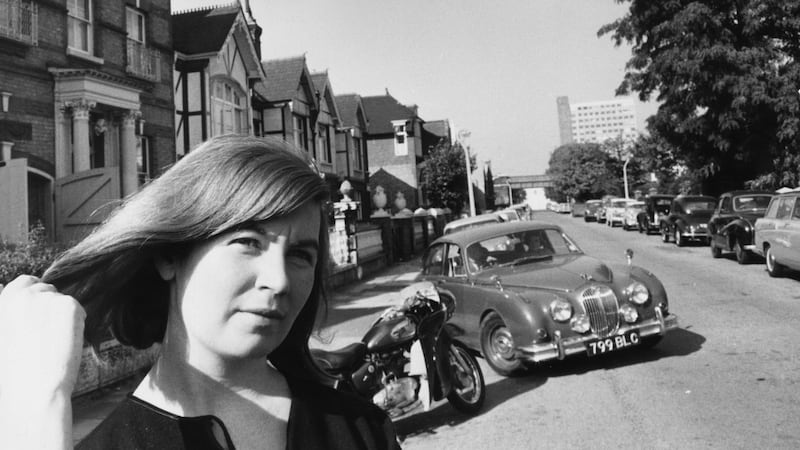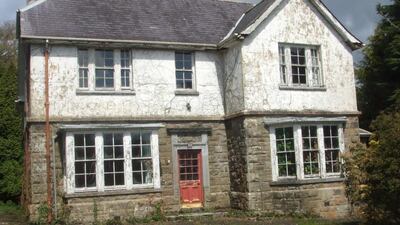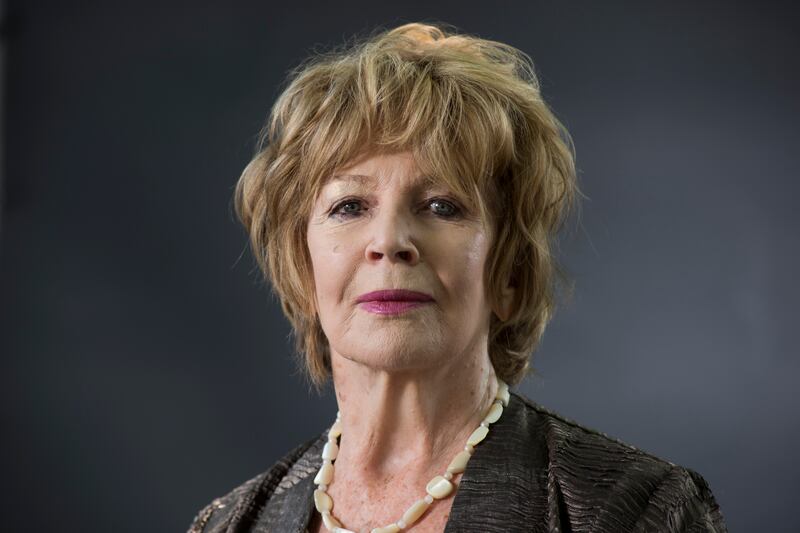Every tribute paid to the late Irish writer Edna O’Brien has mentioned two words: banned and burned.
While the oft-told tale of her debut novel The Country Girls being denounced from the pulpit and possibly burned in her hometown of Tuamgraney, Co Clare, creates a powerful image, it is only half of a much longer and more complex story.
Her feelings towards her homeplace were clear in the early 1960s, after her debut novel was banned. “I often wonder why, when Cromwell said ‘To hell or to Connaught’, he didn’t include Clare,” she told the Guardian in 1962.
Neither did she feel welcomed in the capital, where the Dublin-based censorship board went on to ban her two follow-up books, and political and religious figures queued up to critique the books’ sexual imagery.
Yet, according to locals in east Clare, the easiest way to catch a glimpse of O’Brien in recent years was to look out for her at Sunday Mass in that very same village church.


She may have had to leave her home in order to write about it, but those who knew her say her home was always in Tuamgraney. She had a deep love for the place and its people, and the feeling was very much mutual.
In 2009 the Tuamgraney Development Association commissioned a plaque, inscribed in O’Brien’s own handwriting, at the front of her family home at Drewsborough. The plaque, which O’Brien unveiled herself, reads: “Tuamgraney, home of my home and font of my fictions.” Earlier this year, Clare County Council renamed the nearby Scariff library as the Edna O’Brien library.
According to Michael Blake, O’Brien’s nephew and owner of the East Clare Equestrian Centre, she was very proud of her homeplace and never lost a deep connection with it.
Blake, who is chef d’equipe of the Irish show jumping team at the Paris Olympics, says O’Brien had long stated her wish to be buried on Holy Island in the centre of Lough Derg.
“The plaque was put up by the local community and she was very honoured about that, she really loved it,” he says.
“She was really chuffed about the library too. When she heard about the library idea, she had to think about it for a minute. But when I said it to her for a second time, she was really into it.
“Every time I met her, she brought it up [being buried in Clare], and I met her a lot. She was obsessed with it. She wanted to be brought home to Tuamgraney and then out to the island, to Holy Island. That was so important to her. You wouldn’t believe how important that was to her.
“Maybe 10 or 12 years ago she went on a visit there [Holy Island], and she saw the grave of her uncle, Michael Cleary, who was killed in 1922 in the Troubles. That resonated with her and she knew that that was the place that she wanted to be laid to rest. She brought it up quite often after that.”
Like many Irish writers of her generation, O’Brien had to leave her home and country in order to write about it.
“I don’t think she ever regretted that,” says Blake. “With almost everything you have to leave Ireland. Whether you are a runner or a showjumper, you have to leave to really succeed...
“Tuamgraney was still her home but, like anything else, she had to go away from her home to write about it. That’s what she chose to do. When she came home, she liked to walk around, she didn’t hide away... she would walk around Tuamgraney and Scariff and she loved meeting the people. Her favourite thing was meeting the local people.”
Damien Heaney chairs Tuamgraney Development Association, the group that installed the plaque for O’Brien in 2009. At that time, he was also involved in a move to encourage the powers that be to purchase O’Brien’s family home at Drewsborough, now in private ownership.
He feels the failure of the State to purchase Drewsborough was a missed opportunity.
“A person should be honoured when they are alive, not when they are gone and they don’t know about it,” he said.
“Edna had a huge input into the plaque. She gave us the wording for it and the inscription is in her own handwriting. I know from speaking to her on that night [that the plaque was unveiled] that she was particularly proud that we had thought of her.
“When you think of the international accolades that she has received and all the praise, she came back to her roots and was very touched that we would bother to do it for her, but it was no bother at all.
“A group of us got together locally and we were talking about purchasing the house and turning it into some sort of centre for learning and literature. We were an ad hoc group of individuals, we couldn’t buy a house. It was probably a missed opportunity at the time.
“It was an idea and, I think, a good idea. You could have a summer school where you would invite different authors to come and build a literary festival around Edna O’Brien’s house,” Heaney says. “I’m very glad that the plaque was installed and that the library was renamed in her lifetime,” he says.

Since 2012 Edna O’Brien has been honorary president of the Tuamgraney Community Weekend, a small, local festival which takes place in her home village every July.
In 2013, the year of the Gathering, O’Brien was one of the thousands from the Irish diaspora to return home and reconnect with the land of her birth.
“She was hugely supportive of the festival. Anything we ever asked of her, she always had a think about it and then came back to us. She was always so very supportive,” said Margaret O’Meara, who was formerly involved in the Tuamgraney Community Weekend.
“I think it was home for her still. She would always have been around visiting. We would have often seen Edna at Mass on a Sunday or around visiting the neighbours, especially when her sister was still living, she’d come and stay with family. You’d see her a few times a year.
“People are very sad. She was a big part of Tuamgraney and she contributed a lot to the world. There is a huge amount of pride. I have lived here for 40 or 50 years, and for me I have always felt that sense of pride in Edna.”

Over the past year, Clare County Council has made an effort to honour Edna O’Brien. As well as renaming Scariff library, the local authority also commissioned a giant mural of O’Brien in the centre of Ennis.
Clare arts officer Siobhán Mulcahy says the county is proud of O’Brien and that other ways to honour her will be found in the future.
“I think there is an opportunity to commemorate her further. People can sometimes rush into these things in the heat of the moment. I think there will be a very fitting tribute to her at some stage and we look forward to being able to realise that at an appropriate time,” she says.
“I can’t comment on whether it was a missed opportunity not buying the house. The house is there, but there might be other ways of commemorating her that might be more fitting.”
In truth, O’Brien’s sometimes complex relationship with Ireland, and vice versa, is no different from many talented Irish people of her generation.
“You have to be dead in Ireland to be a hero,” said her nephew, Michael Blake. “History has shown us that; there are no living martyrs.”

















